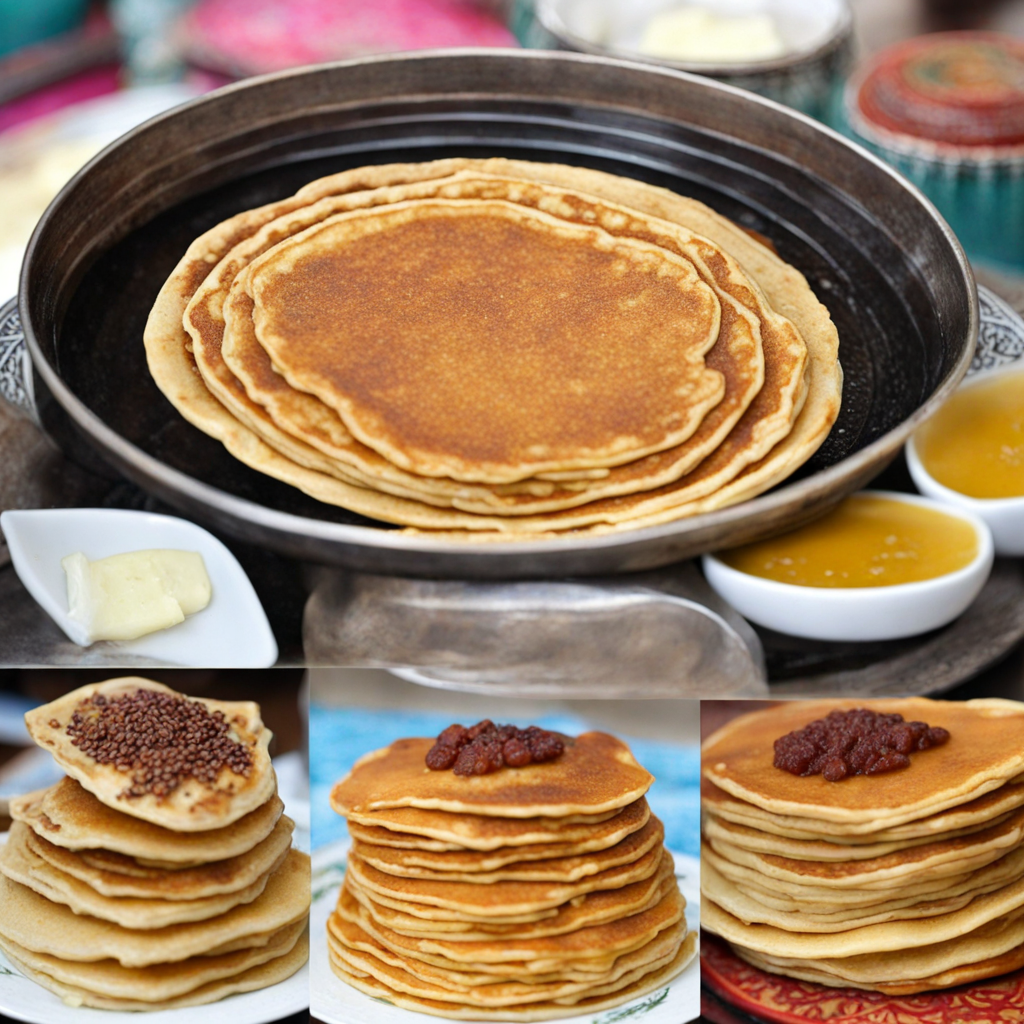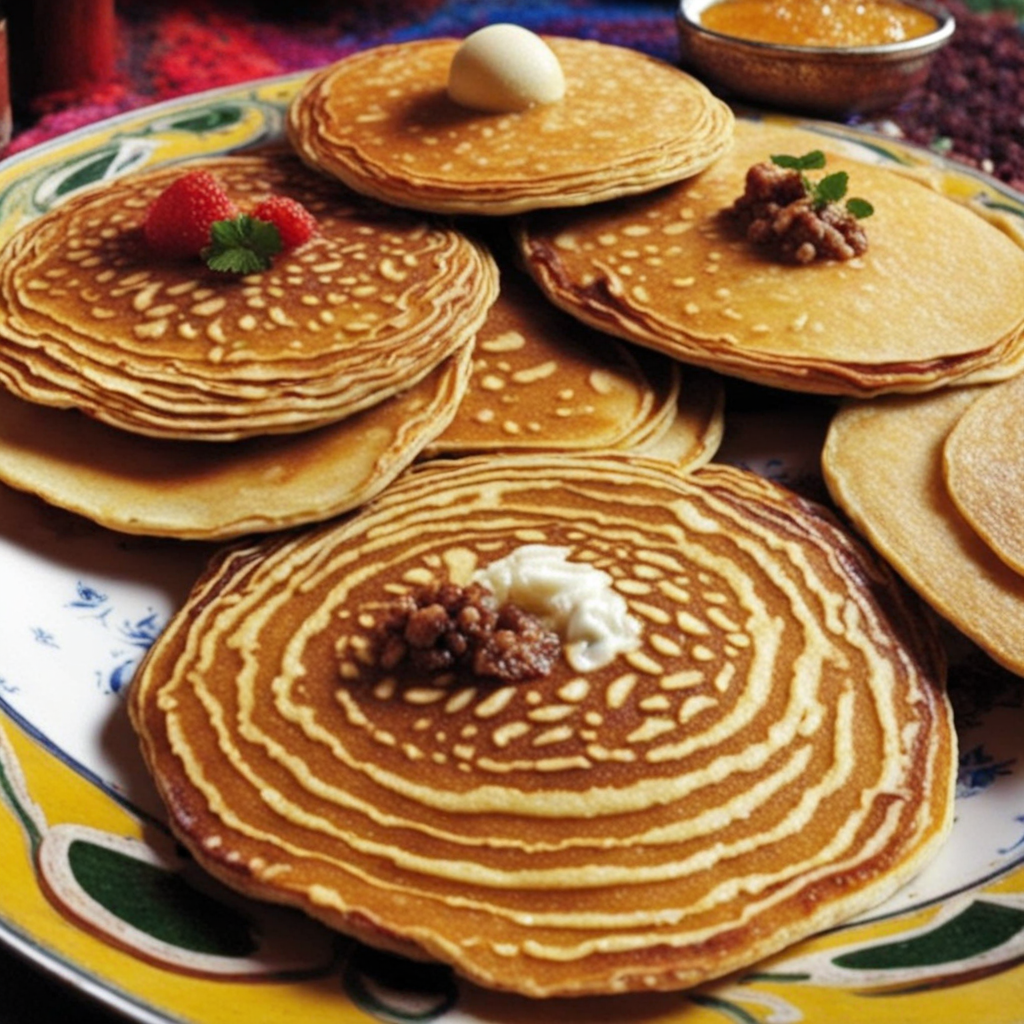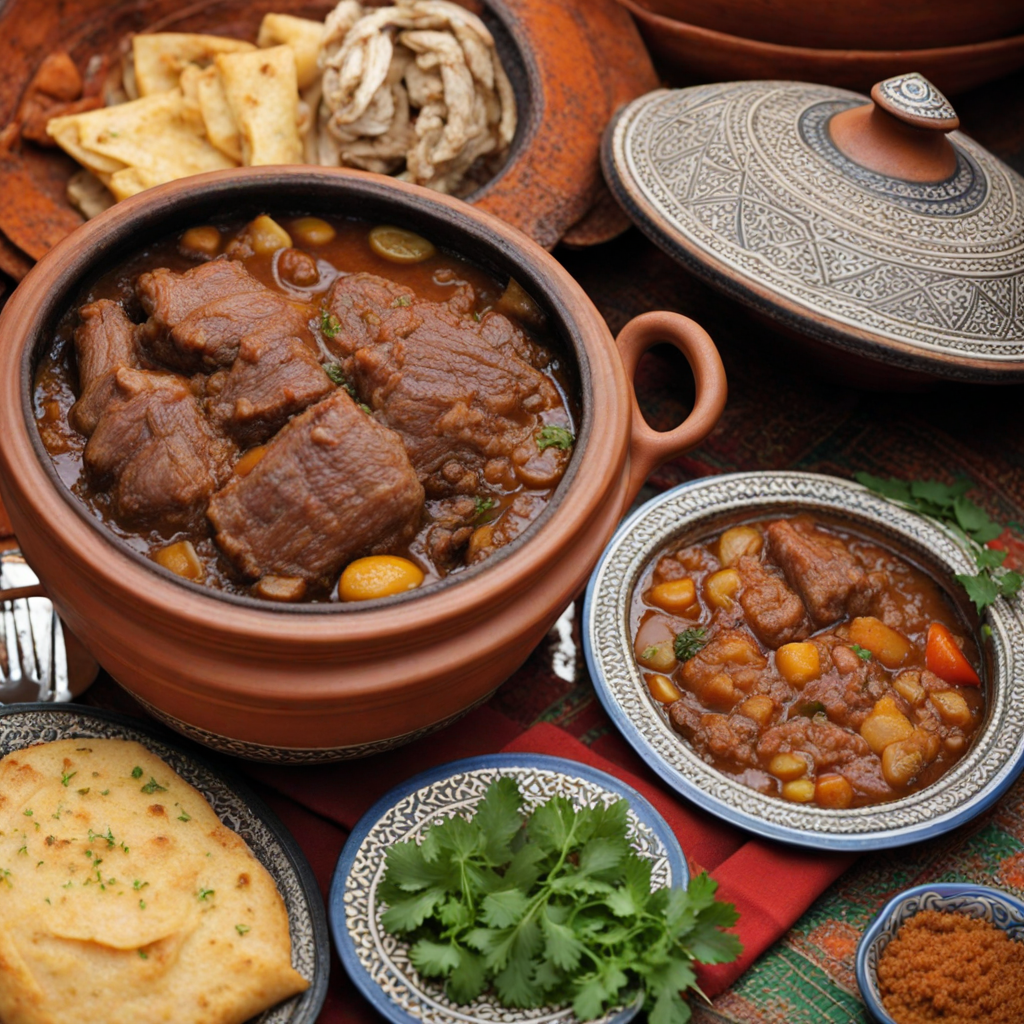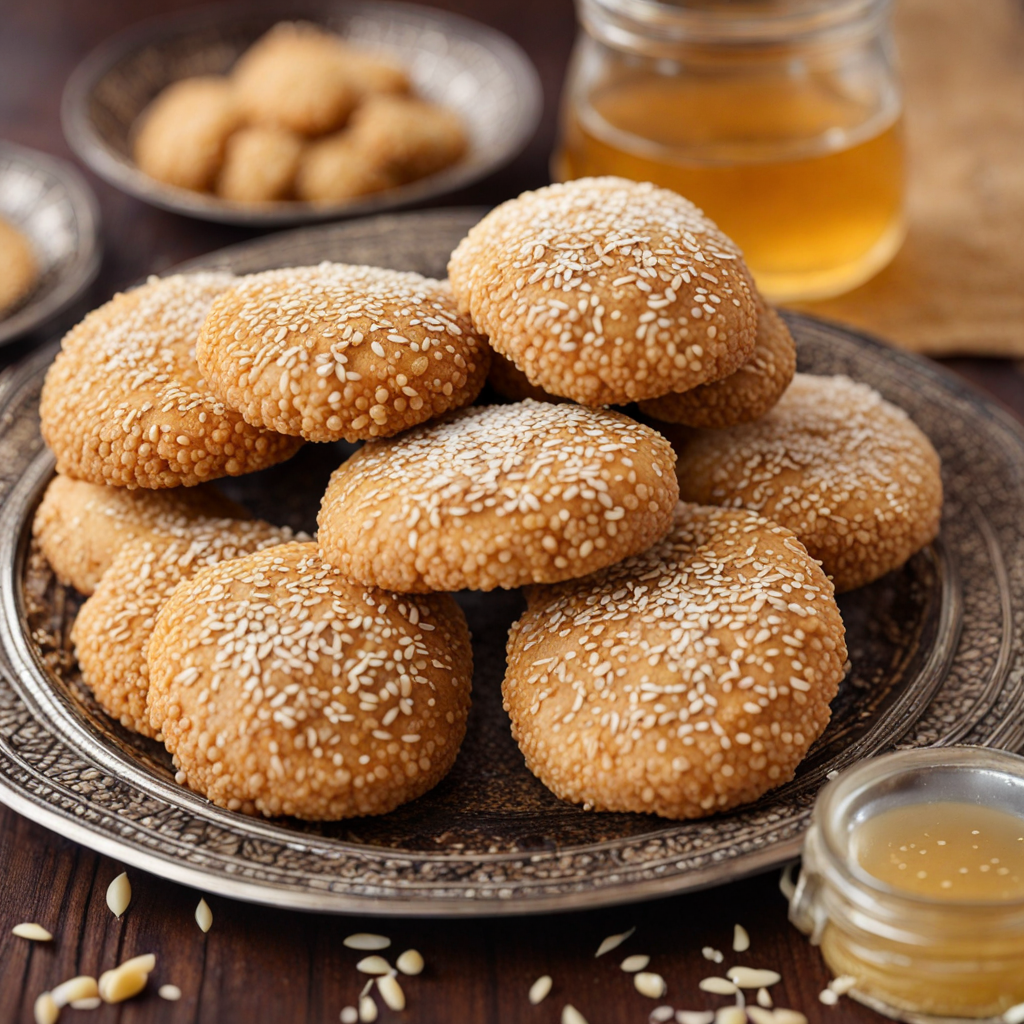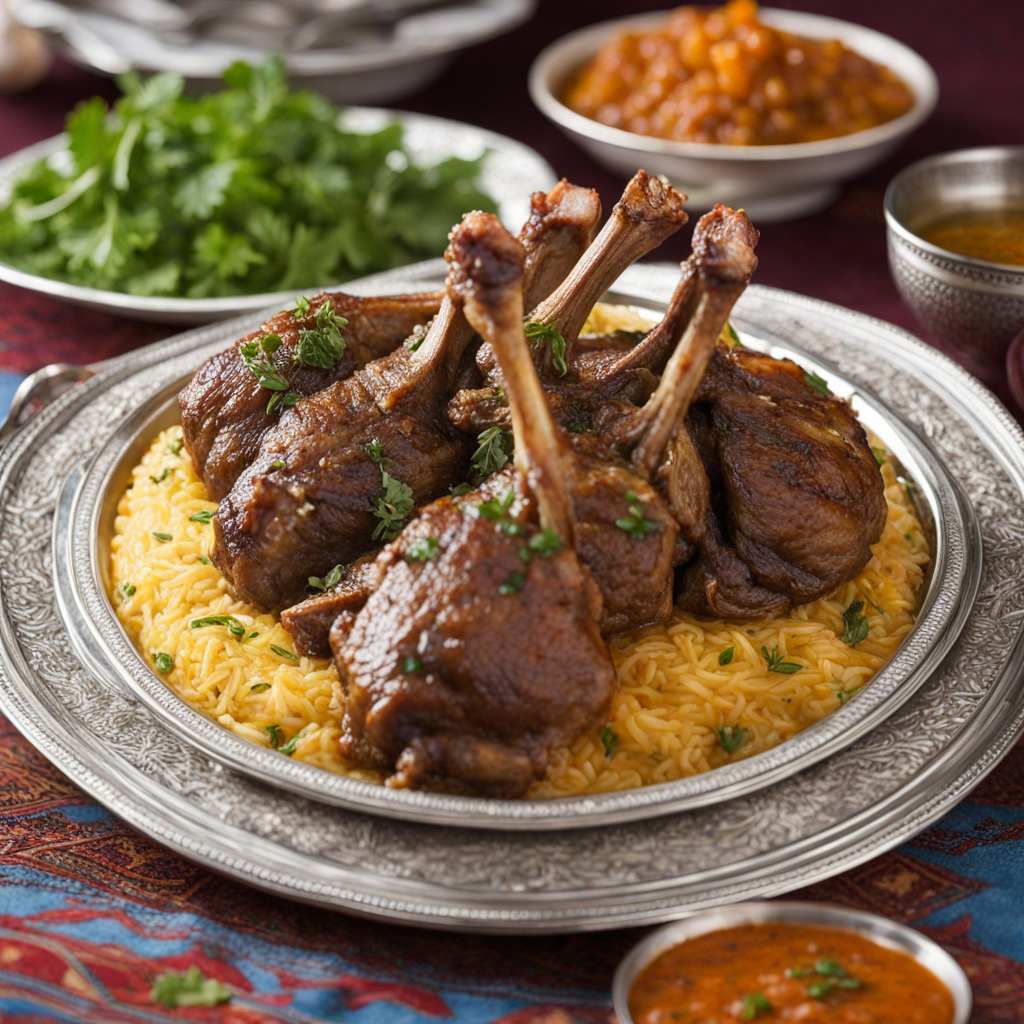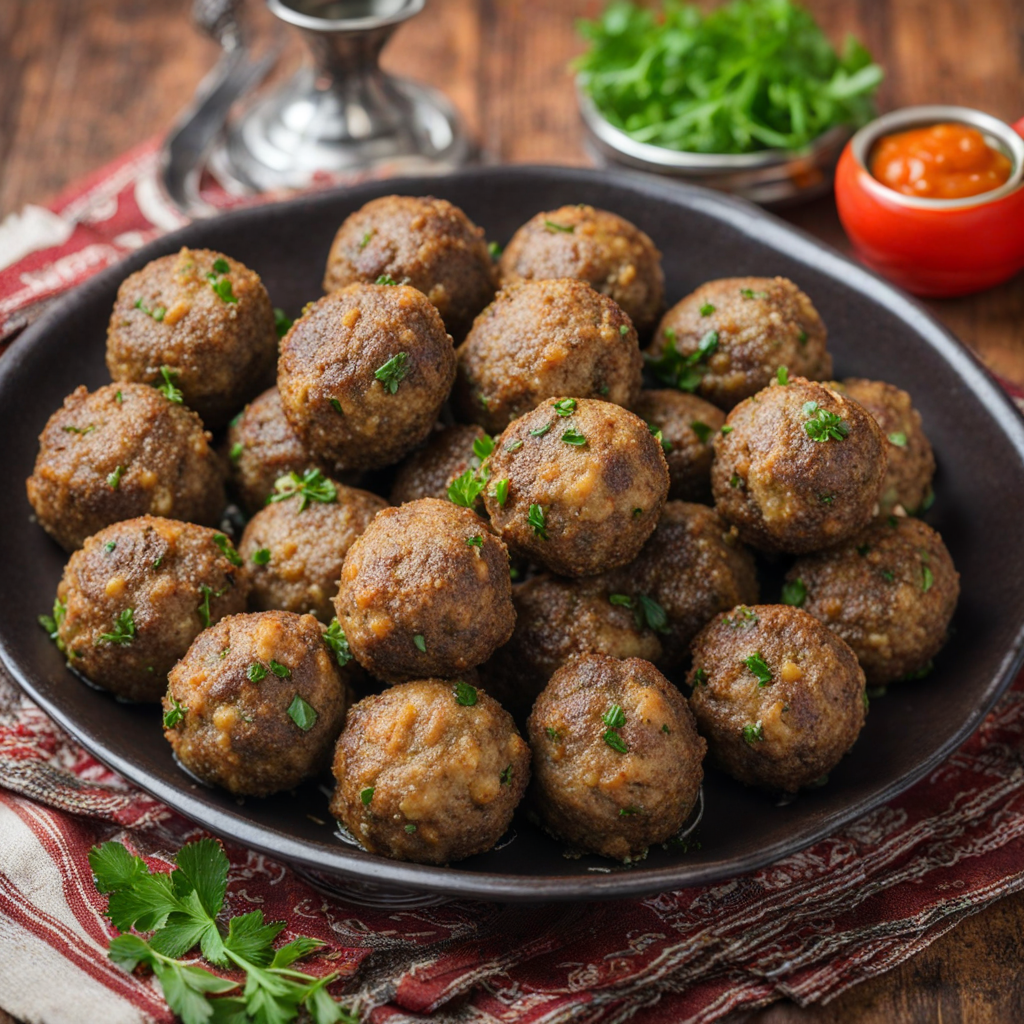Moroccan Pancakes
Moroccan Pancakes, known as "Baghrir," are a delightful culinary experience that captures the essence of Moroccan flavors. These spongy, yeast-leavened pancakes are unique due to their light, airy texture and the distinctive holes that form on the surface during cooking. Made primarily from semolina, flour, yeast, and water, they have a subtly nutty flavor that pairs beautifully with a variety of toppings. Traditionally, they are served warm, and their porous surface allows them to soak up delicious syrups or honey, making each bite a sweet revelation. The preparation of Baghrir involves a simple yet fascinating process. The batter is allowed to rest and ferment, which not only develops its flavor but also contributes to the characteristic texture. Once cooked, they become a canvas for a range of accompaniments, from drizzles of honey and melted butter to savory spreads and dips. The pancakes can be enjoyed for breakfast, as a snack, or even as a dessert, showcasing their versatility in Moroccan cuisine. Each pancake is fluffy and moist, making them incredibly satisfying to eat. In Moroccan culture, sharing food is a significant part of social gatherings, and Baghrir embodies this spirit of togetherness. Often enjoyed with family and friends, these pancakes create a sense of warmth and community. Whether you savor them plain, slathered in rich honey, or paired with olives and cheese for a savory twist, Moroccan Pancakes offer a unique taste adventure that reflects the rich culinary heritage of Morocco. Discovering the delightful flavors of Baghrir is an invitation to explore the vibrant world of Moroccan gastronomy.
How It Became This Dish
The History of Moroccan Pastries: فطائر مغربية (Fatair Maghribiya) #### Origins and Historical Context Moroccan pastries, known as فطائر مغربية (Fatair Maghribiya), are a delightful and integral part of Morocco's culinary heritage. The origins of these pastries can be traced back to the rich tapestry of influences that have shaped Moroccan cuisine over centuries. Situated at the crossroads of Europe, Africa, and the Middle East, Morocco has absorbed a multitude of culinary traditions, resulting in a unique and diverse gastronomic landscape. The history of Fatair Maghribiya can be linked to the introduction of pastry-making techniques from various cultures. During the 7th to 8th centuries, the Arab conquest of North Africa brought with it new ingredients and methods. The incorporation of spices such as cinnamon, saffron, and cumin transformed simple dough recipes into intricate and flavorful pastries, reflecting the local palate. As trade routes flourished, particularly during the medieval period, the influence of the Andalusian culture became pronounced. The migration of Muslims and Jews from Spain to Morocco during the Reconquista brought with them their own culinary traditions, including the art of pastry-making. This period saw the introduction of almond and honey into Moroccan pastries, which would later become essential ingredients in many Fatair recipes. #### Cultural Significance Fatair Maghribiya are not merely snacks; they embody the spirit of Moroccan hospitality and the importance of food in social and religious gatherings. These pastries are often served during special occasions such as weddings, religious festivals, and family gatherings. The act of preparing and sharing Fatair is a communal experience, symbolizing togetherness and generosity. One of the most significant occasions for enjoying Moroccan pastries is during Ramadan, the holy month of fasting. Fatair are often served as iftar, the meal that breaks the fast at sunset. Their sweet or savory fillings provide nourishment after a long day of fasting and foster a sense of community as families and friends gather to share the meal. Moreover, Fatair Maghribiya are often associated with Moroccan tea culture. The traditional serving of mint tea, known as "atay," is incomplete without a selection of pastries. This ritual highlights the importance of hospitality in Moroccan society, where offering food and drink to guests is a sign of respect and welcome. #### Development Through the Ages The evolution of Fatair Maghribiya reflects broader trends in Moroccan society and the global culinary landscape. Over time, the basic structure of these pastries has remained relatively consistent: a thin, flaky dough filled with various ingredients, which can be sweet or savory. However, the fillings and preparation methods have evolved, influenced by regional ingredients and modern culinary practices. Historically, Fatair were made using a simple dough of flour and water, which was stretched thin and filled with mixtures of meat, vegetables, or nuts. In the past, the use of lamb and spices was prevalent, as these ingredients were widely available and culturally significant. The pastries were often cooked in traditional clay ovens, imparting a unique flavor and texture. As Morocco entered the 20th century, the influence of French colonialism introduced new baking techniques and ingredients. The widespread availability of butter and refined sugar allowed for the creation of richer and sweeter pastries, which became popular among the Moroccan elite. This period also saw the emergence of new types of Fatair, including those filled with chocolate, fruit, and custard, reflecting global culinary trends. The post-independence era of the 1960s and 1970s further transformed the landscape of Moroccan pastries. With the rise of tourism, traditional recipes began to blend with international influences, leading to the creation of fusion pastries. While maintaining their Moroccan essence, Fatair Maghribiya began to incorporate flavors and techniques from Mediterranean and Middle Eastern cuisines. #### Regional Variations Morocco is a land of diverse cultures and landscapes, and this diversity is reflected in the regional variations of Fatair Maghribiya. Each region boasts its own unique take on these pastries, depending on local ingredients, customs, and historical influences. In the coastal cities like Essaouira and Agadir, seafood fillings are popular, utilizing the fresh catch of the day. In the interior regions, such as the Atlas Mountains, Fatair may be filled with local vegetables or nuts, showcasing the agricultural bounty of the land. The city of Marrakech, known for its vibrant souks, offers a plethora of sweet Fatair, often drizzled with honey and sprinkled with sesame seeds, embodying the essence of Moroccan sweets. The use of spices also varies by region. In the north, where the influence of Andalusian culture is strong, pastries may incorporate more cinnamon and sugar, while in the south, spices like cumin and coriander are more prevalent. These regional distinctions not only showcase the rich culinary heritage of Morocco but also the adaptability of Fatair to local tastes and traditions. #### Modern Adaptations and Global Influence In recent years, Fatair Maghribiya have gained international recognition, thanks in part to the globalization of culinary arts and the increasing popularity of Moroccan cuisine worldwide. Chefs and food enthusiasts have embraced these pastries, experimenting with fillings and presentation while maintaining their traditional roots. Contemporary Moroccan bakeries and restaurants often offer Fatair in innovative ways, pairing them with international flavors and modern plating styles. For example, savory Fatair filled with spiced lamb might be served alongside a yogurt sauce infused with garlic and herbs, while sweet Fatair may be accompanied by fresh fruits or ice cream. This fusion of traditional and modern reflects the dynamic nature of Moroccan cuisine. Furthermore, social media has played a significant role in popularizing Fatair Maghribiya, with food bloggers and influencers sharing recipes and beautiful images of these pastries. This has sparked interest among a younger generation, encouraging them to explore their culinary heritage and experiment with traditional recipes in their own kitchens. #### Conclusion Fatair Maghribiya encapsulate the heart and soul of Moroccan cuisine, reflecting a rich history of cultural exchange, regional diversity, and evolving culinary practices. These pastries are more than just food; they are a symbol of hospitality, tradition, and community. As they continue to adapt and thrive in a globalized world, Fatair Maghribiya remain a beloved culinary treasure, inviting people from all walks of life to experience the flavors and stories of Morocco. Through every flaky layer and savory-sweet bite, one can taste the centuries of history and the vibrant culture that shape these enchanting pastries.
You may like
Discover local flavors from Morocco


